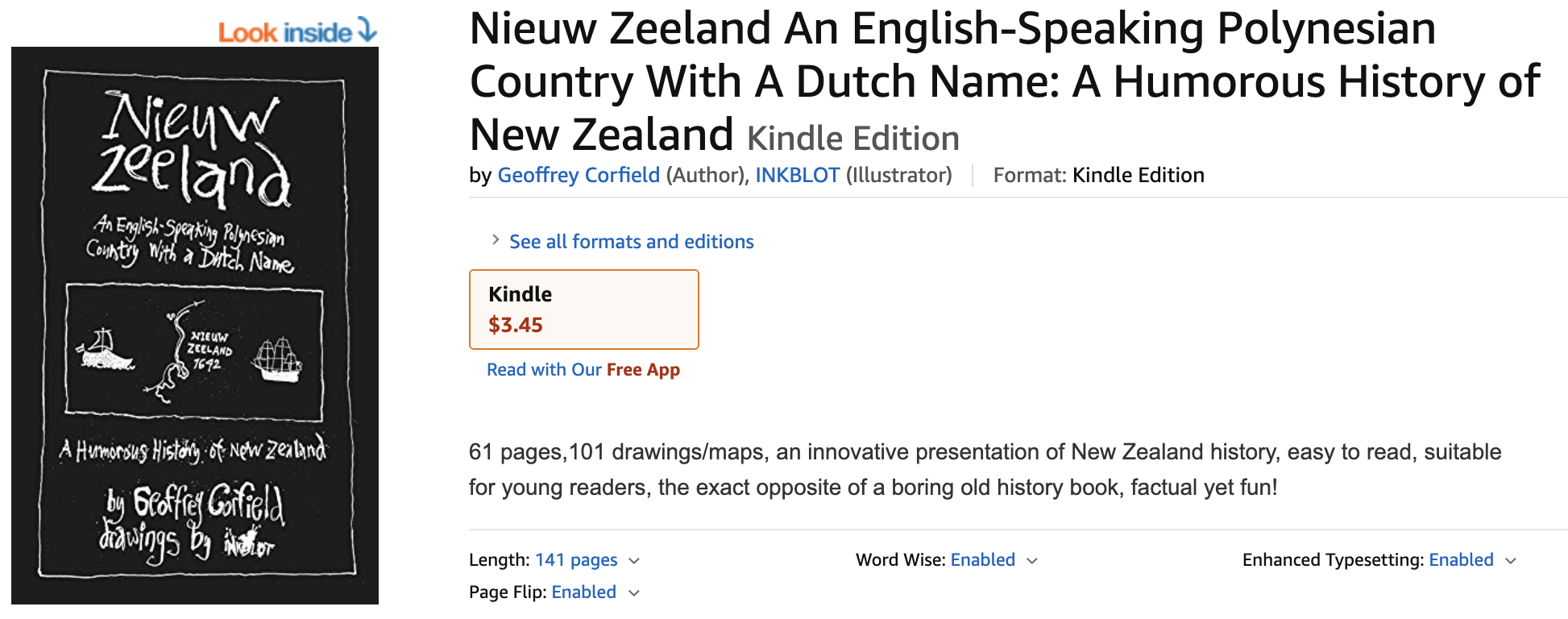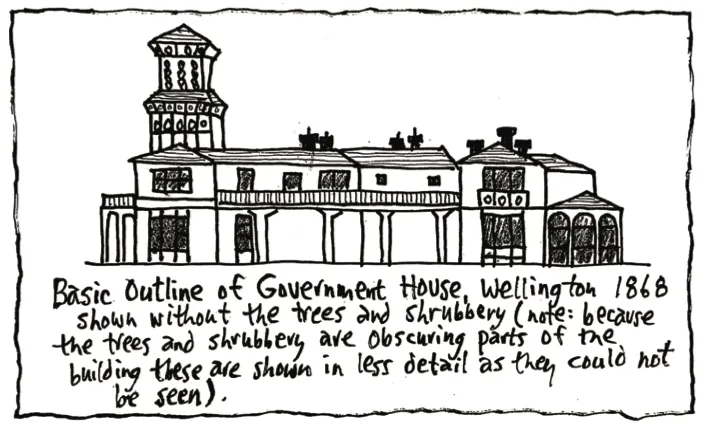Table of Contents
You can purchase Nieuw Zeeland An English-Speaking Polynesian Country With A Dutch Name: A Humorous History of New Zealand by Geoffrey Corfield from Amazon today.

So an elected township official could also be elected to the provincial House of Representatives, and then also elected to the national House of Representatives. One person in three different places. What happens to the vacated places? A complicated system of government.
But most of the colonists are happy. They get something. There are some positions to be elected for. The Governor though is not happy. There are not enough elected positions, and no representation specifically for the Maori. The Constitution Act is suspended for one year and postponed for five. The Governor is happy. The colonists are not happy.
A colony of unhappy colonists is not a happy thing for a Governor to have. So the Governor divides the colony into two provinces himself; puts an appointed Lieutenant-Governor in Wellington to govern the south province; and proposes unelected councils for both provinces. The colonists are still not happy. The North Council (Auckland) never meets, and the South Council (Wellington) meets once (1849). Another failed government attempt.
The Governor tries again. He rules that only occupied Maori land will be recognised as Maori land, and that all unoccupied Maori land will be classified as Crown Land. The colonists are happy. The Maori are not happy.
The British government tries again. They pass the second “New Zealand Constitution Act” (1852). This time the country will be divided into six provinces, three in the North Island and three in the South. They will each have a New Zealand name (Auckland, Canterbury, Nelson, New Plymouth, Otago, Wellington); and they will each have two levels of government: provincial and national.
The provinces will have an elected Superintendent and an elected Legislative Council; and the national will have an appointed Governor, an appointed Legislative Council, and an elected House of Representatives.
There are a list of subjects that the provinces cannot pass laws on (customs, currency, courts, post office, marriage); and what they do pass laws on could be vetoed by the Governor.
The first New Zealand elections are held from June-October 1873. Not many people run for the elected national government positions, but the provincial government positions are very popular. Those eligible to vote are male landowners or leaseholders (Maori men get the vote in 1867 and all women in 1893).
The provinces get organised quicker than the national government and become more important. Rather than be restricted by what they can pass laws on, they are only restricted by what they cannot; so they pass laws on everything they can, including all the things the national government should be doing (development, finance, education, immigration, land, roads, health). They basically take over.
This is not the way the Constitution was supposed to work. The two levels of government are not cooperating, they are competing against each other. It is confusing and complicated. Another failed government attempt. The Governor leaves. The House of Representatives (national) wants full responsible government. The Acting Governor adds three elected members to the three appointed members of the Legislative Council (national), but they later resign. More confusion (1854).
Britain orders the Acting Governor to give New Zealand full responsible government (1856). But it is easier said than done.
There are no political parties until 1890. Parliaments are made up entirely of independent members who choose a Premier from amongst themselves. Groups form around leaders. Leaders form Associations which attract supporters, but only so long as the leader is there, and only depending upon what the leader’s stance is on various issues. Not a stable government situation.
In the national government, a South Island group of members elects a Canterbury Premier and all South Island ministers. The Auckland members don’t like this and join the Wellington and Otago members to try and defeat them. Nelson supports Canterbury. In an unstable situation like this New Zealand is governed by 25 different ministries over 35 years. The two biggest problems they face are: what to do with the two levels of government, and what to do with the Maori. Members are divided as to supporting national or provincial, urban or rural, rich province or poor.
The solution is to add four new provinces (Hawke’s Bay 1858, Marlborough 1859, Southland 1861, Westland 1873); and to change the name of New Plymouth province to Taranaki (1858). Government in action. When in doubt: add more government!
There are now more provinces (10), but they are smaller, weaker and more divided. They are like Maori tribes, each one out for themselves. The provincial and national governments still argue over money and jurisdiction. And there is still the problem of what to do with the Maori. Soon the North Island will be fighting some of them again. They are eventually given four permanent members of Parliament (1868).
The capital of New Zealand is moved again from Auckland to Wellington, to be closer to the South Island, and to be farther away from the restarted wars in the North Island (1865). The national government embarks on a 10-year plan of large scale immigration, public works and the borrowing of money to pay for everything.
By 1870 the government situation has turned around, and the national government is more important than the provinces, which continue to squabble amongst themselves and have to be constantly threatened with abolition if they do not cooperate towards the national good. But they continue to be a problem.
Otago and Canterbury oppose the national government’s railway plans (1873). Wellington opposes the national government’s conservation plans (1874). Within the smaller South Island provinces there are moves to create even more smaller provinces.
You can purchase Nieuw Zeeland An English-Speaking Polynesian Country With A Dutch Name: A Humorous History of New Zealand from Amazon today.

If you enjoyed this BFD article please consider sharing it with your friends.









